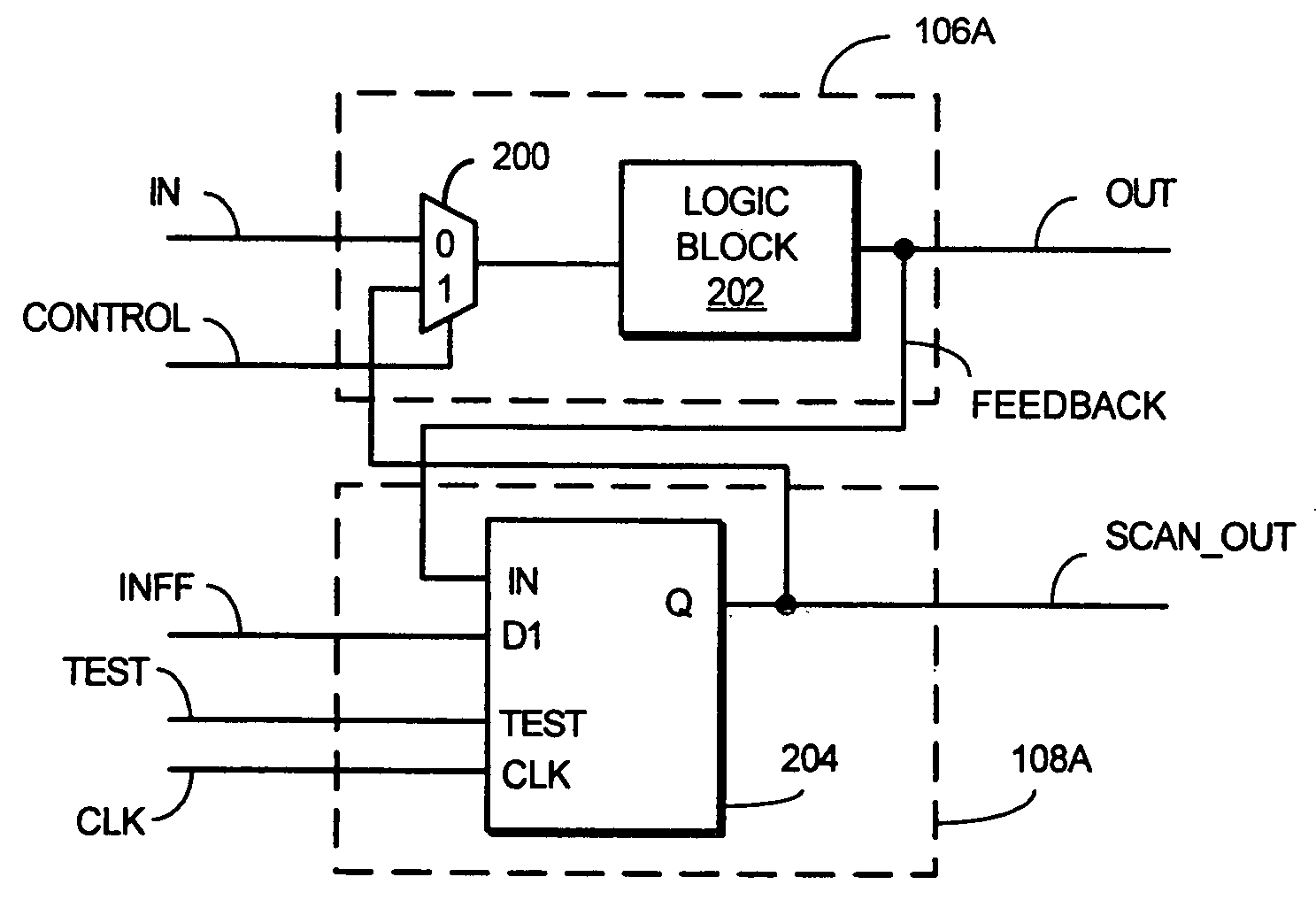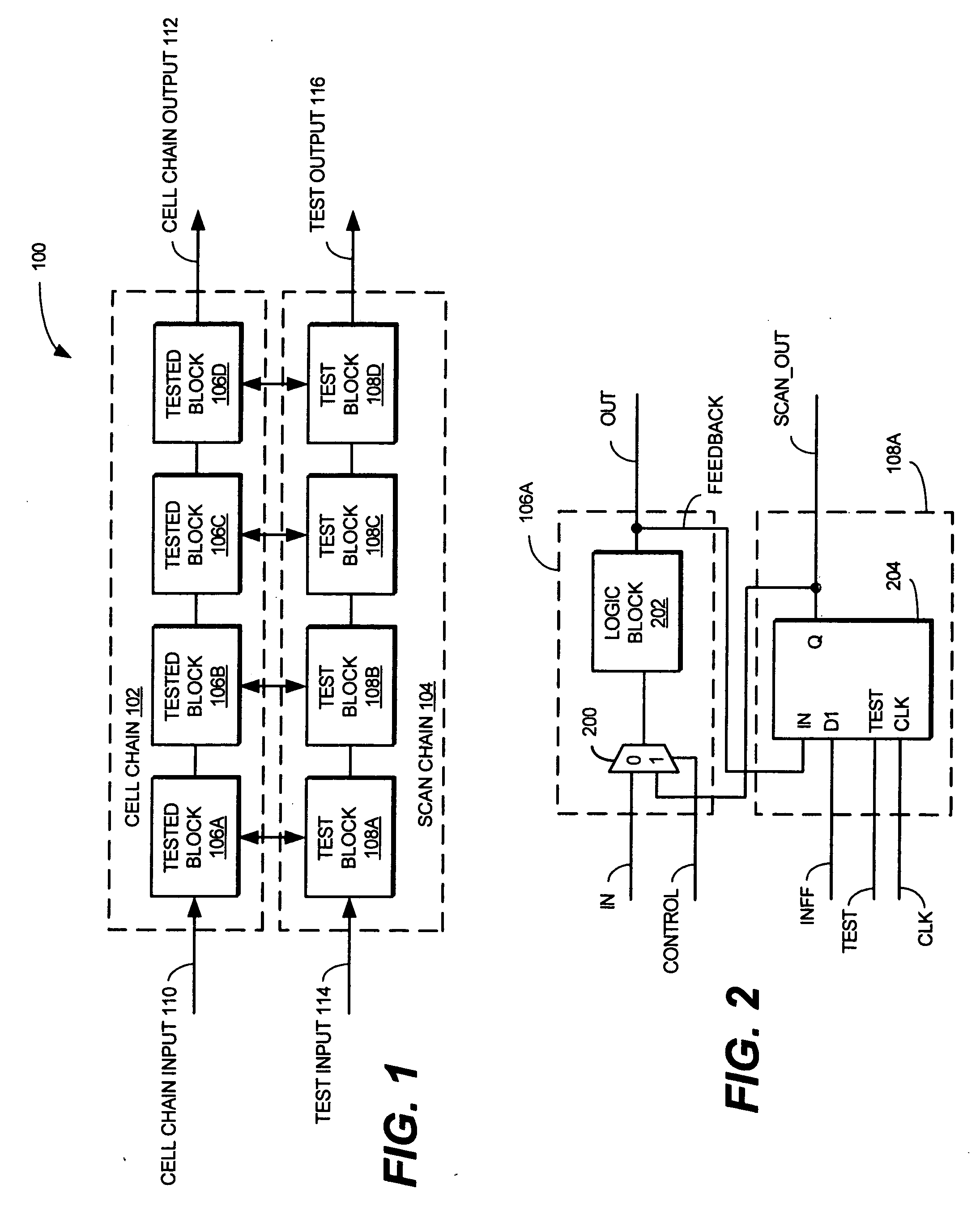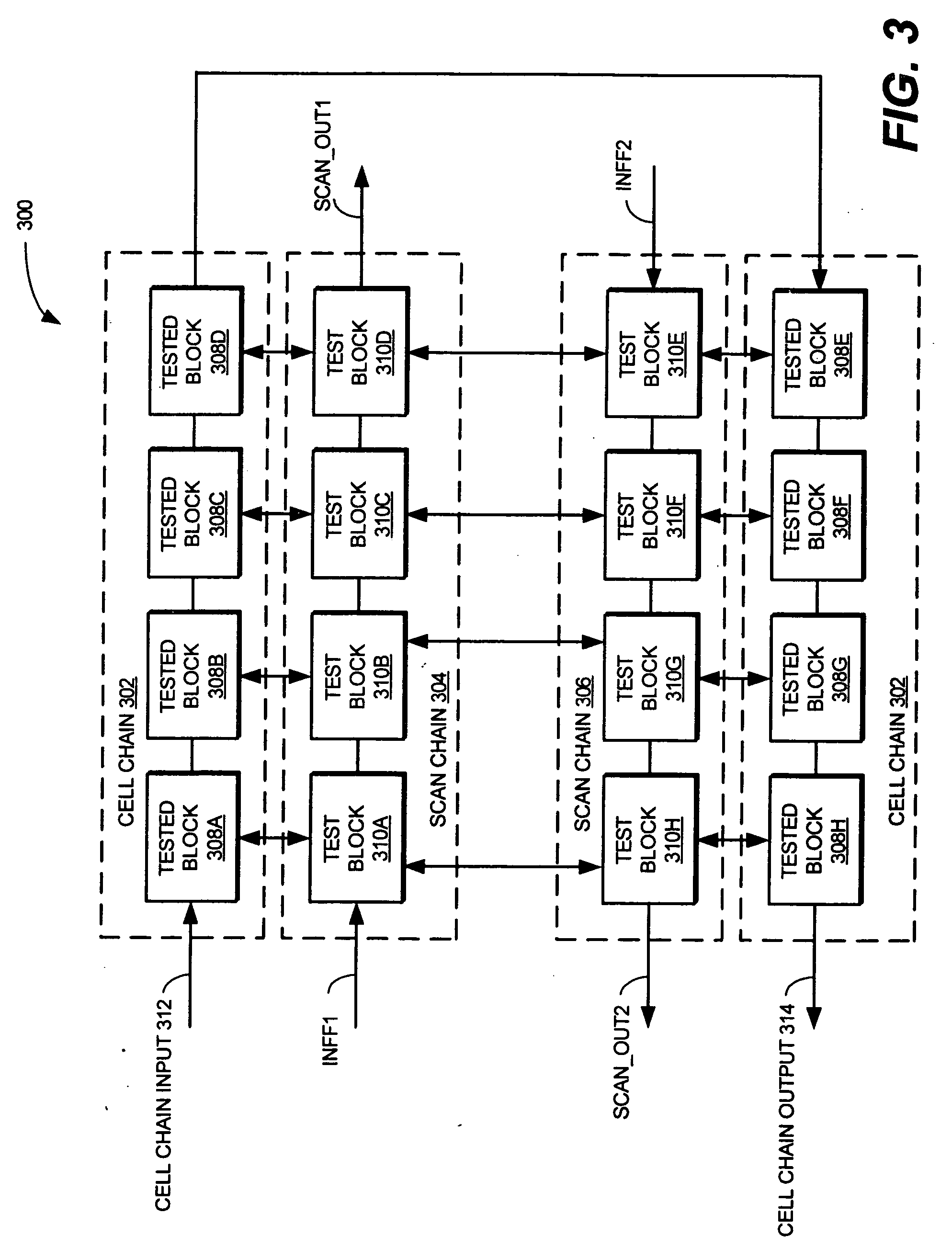Method and apparatus for determining stuck-at fault locations in cell chains using scan chains
a cell chain and fault technology, applied in error detection/correction, instruments, computing, etc., can solve problems such as stuck faults, common defects in digital circuits, and inability to recover the output of digital circuits, and achieve the effect of quickly locating stuck faults in cell chains and quickly locating stuck faults within scan chains
- Summary
- Abstract
- Description
- Claims
- Application Information
AI Technical Summary
Benefits of technology
Problems solved by technology
Method used
Image
Examples
Embodiment Construction
[0030] The present invention relates generally to testing the presence of faults in digital circuits. The following description is presented to enable one of ordinary skill in the art to make and use the invention and is provided in the context of a patent application and its requirements. Various modifications to the preferred implementations and the generic principles and feature described herein will be readily apparent to those skilled in the art. Thus, the present invention is not intended to be limited to the implementations shown but is to be accorded the widest scope consistent with the principles and features described herein.
[0031]FIG. 1 shows a block diagram of a scan chain test structure 100. Scan chain test structure 100 includes a cell chain 102 and a scan chain 104.
[0032] Cell chain 102 includes tested blocks 106A-106D. Though four tested blocks are illustrated in FIG. 1 by way of example, cell chain 102 can contain a different number of tested blocks. During a norm...
PUM
 Login to View More
Login to View More Abstract
Description
Claims
Application Information
 Login to View More
Login to View More - R&D
- Intellectual Property
- Life Sciences
- Materials
- Tech Scout
- Unparalleled Data Quality
- Higher Quality Content
- 60% Fewer Hallucinations
Browse by: Latest US Patents, China's latest patents, Technical Efficacy Thesaurus, Application Domain, Technology Topic, Popular Technical Reports.
© 2025 PatSnap. All rights reserved.Legal|Privacy policy|Modern Slavery Act Transparency Statement|Sitemap|About US| Contact US: help@patsnap.com



